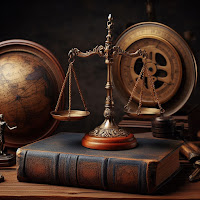FRENCH ALPHABET OR ABC
FRENCH ALPHABET COMPOSITION
Uses the same basic English alphabet, but many of the letters can carry additional marks, such as E, A and O. In French, these combinations are not considered additional letters. However, in Iceland, accented letters, such as a, i, o and are considered different letters of the alphabet. In Spanish, ñ is considered a separate letter, but the accented vowels like A and E are not. The ll and ch are also considered individual letters, but in 1994 the Royal Spanish Academy of Language has changed the classification for which I is between LK and LM in the dictionary and ch is between CG and CI.
SIMILARITIES AND DIFFERENCES OF FRENCH ALPHABET WITH RESPECT TO OTHER ALPHABETS
In German, the words that begin with SCH-(which is the German phoneme / ʃ /) are sandwiched between the words with initial SCA-and science (all loans by the way) instead of this group of charts that follow the letter s, as if it were a single letter - a policy that would lexicographical rigor in a dictionary of Albania, namely:-dh, gj-,-ll, rr-, th-, XH-and-zh (all single letters represent phonemes and is considered separately) would follow the letters d, g, l, n, r, t, xyz, respectively. Neither is a dictionary of English, the initial section lexicon TH-booked a place after the letter t, but is inserted between you-and-ti. German words with umlauts are in alphabetical order as if there were an umlaut at all - against Turkey who allegedly approved the Swedish graphemes ö and ü, in a word like Tufek, "weapon", would come after Tuz, " sal "in the dictionary.
Danish and Norwegian alphabets with æ end - or -, while the Swedes and Finns conventionally placed at - at - or at the end.
Some adaptations of the Latin alphabet are supplemented by bonds, such as æ in Old English and Icelandic and ȣ in Algonquin, by loans from other alphabets, such as the thorn þ in Old English and Icelandic, which came from the Futhark runes, and changed of the existing letters, such as ETH ð of Old English and Icelandic, which is a modified version of d. Other alphabets, using a subset of Latin characters, such as Hawaii, and Italian, which uses the letters j, k, x, YYW only in foreign words.
It is unknown if the first alphabets had a definite sequence. Some alphabets today, as the script Hanuno'o are learned one letter at a time, with no particular order, and are not used for comparison in a defined order. However, a dozen of Ugaritic tablets from the fourteenth century BC preserves the alphabet in two sequences. One, the ABCDE to be later used in Phoenician, has continued with minor changes in Hebrew, Greek, Armenian, Gothic, Latin cirílicoy, and the other HMĦLQ, was used in southern Arabia and Ethiopia remains today. Both orders have therefore been stable for at least 3000 years.
The historical order was abandoned in Runes and Arabic, but retains the traditional Arabic numbers "to abjadi."
Brahma's family of alphabets used in India has a unique order based on phonology: The letters are arranged according to how and where occurring in the mouth. This organization is used in Southeast Asia, Tibet, Korean Hangul, and even Japanese kana, which is not an alphabet.
The names of the Phoenician letters, in which each letter is associated with a word that starts with that sound, they are still used in Samaritan, Aramaic, Syriac, Hebrew and Greek. However, they were abandoned in Arabic, Cyrillic and Latin with the passage of time.
Danish and Norwegian alphabets with æ end - or -, while the Swedes and Finns conventionally placed at - at - or at the end.
Some adaptations of the Latin alphabet are supplemented by bonds, such as æ in Old English and Icelandic and ȣ in Algonquin, by loans from other alphabets, such as the thorn þ in Old English and Icelandic, which came from the Futhark runes, and changed of the existing letters, such as ETH ð of Old English and Icelandic, which is a modified version of d. Other alphabets, using a subset of Latin characters, such as Hawaii, and Italian, which uses the letters j, k, x, YYW only in foreign words.
It is unknown if the first alphabets had a definite sequence. Some alphabets today, as the script Hanuno'o are learned one letter at a time, with no particular order, and are not used for comparison in a defined order. However, a dozen of Ugaritic tablets from the fourteenth century BC preserves the alphabet in two sequences. One, the ABCDE to be later used in Phoenician, has continued with minor changes in Hebrew, Greek, Armenian, Gothic, Latin cirílicoy, and the other HMĦLQ, was used in southern Arabia and Ethiopia remains today. Both orders have therefore been stable for at least 3000 years.
The historical order was abandoned in Runes and Arabic, but retains the traditional Arabic numbers "to abjadi."
Brahma's family of alphabets used in India has a unique order based on phonology: The letters are arranged according to how and where occurring in the mouth. This organization is used in Southeast Asia, Tibet, Korean Hangul, and even Japanese kana, which is not an alphabet.
The names of the Phoenician letters, in which each letter is associated with a word that starts with that sound, they are still used in Samaritan, Aramaic, Syriac, Hebrew and Greek. However, they were abandoned in Arabic, Cyrillic and Latin with the passage of time.



.jpg)



Comentarios